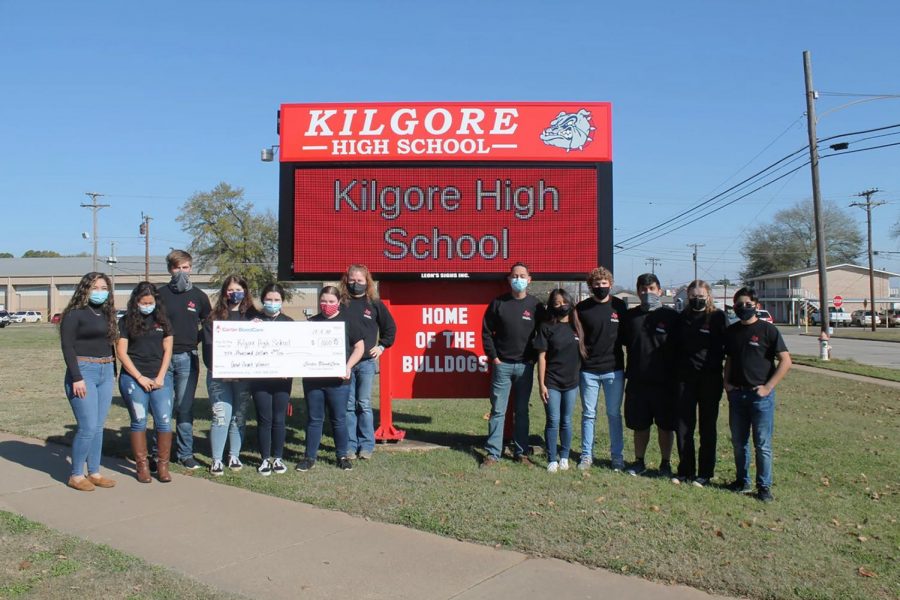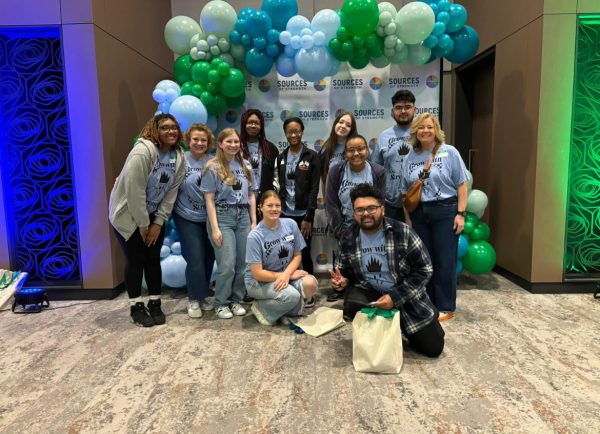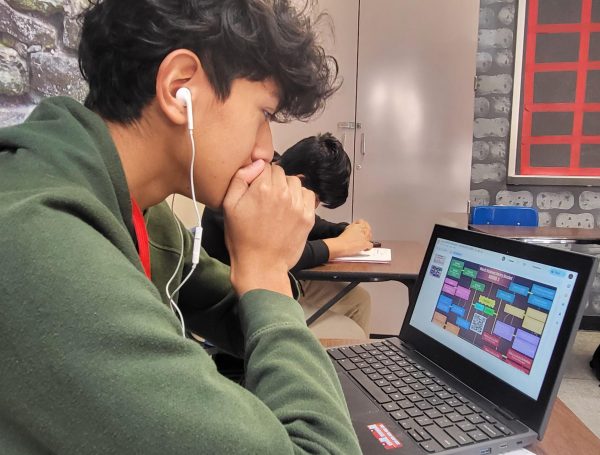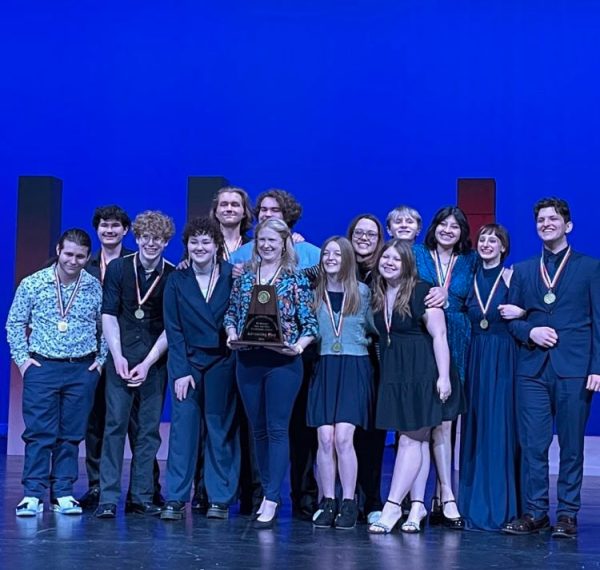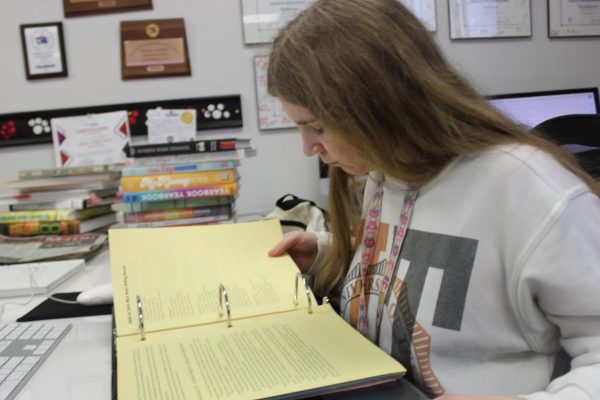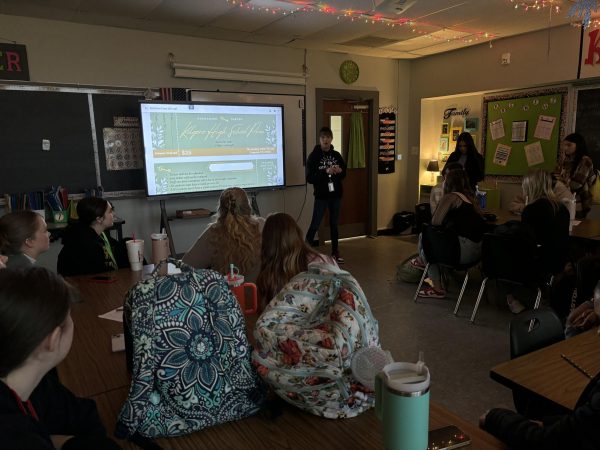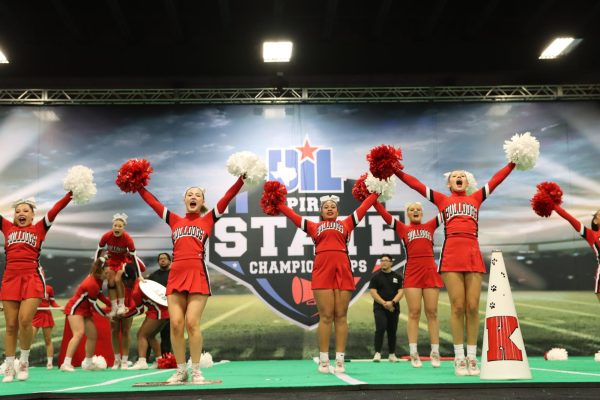Health Science: Drives and Donations
Health Science Club poses with the $1,000 check given to them by the Carter Blood Care Great Grant Program. “We worked really hard on the blood drive and during the year to receive this honor,” junior Cason Cox said.
One thing people cling to is a sense of normalcy or tradition. A tradition KHS has is their blood drive partnered with Carter Blood Care.
The blood drives we’ve hosted have been able to open many doors for the KHS Health Science Club. They were recently presented with a check for a large sum of money, $1,000, from the Carter Blood Care Great Grants Program.
They try to have at least 5 drives each year. If a senior has given blood twice, they would be able to receive a red cord they are able to wear at graduation. They can also receive the credit if they have another adult donate in their name.
“Hosting 5 drives gives seniors extra opportunities in case they were unable to give at a drive,” Coach Cheyenne Kirkpatrick said.
With each blood drive, they keep them at least 8 weeks apart. They do this to ensure that a donor would be eligible to contribute again at the next one. Kirkpatrick is able to brainstorm the days each drive could possibly be held on.
“The Carter Blood Care Rep and I work together to select dates and then I turn them in to Mrs. Cox for approval,” Kirkpatrick said.
There are, on average, around 70 children and adults who would sign up to donate blood for each drive. Normally, there wouldn’t be that many to show up to donate because of outstanding factors.
“There are always some who are unable to give due to low iron, fast heart rate, not feeling well that day, changed their mind, or forgotten permission slips,” Kirkpatrick said.
Because of COVID, they have had to adapt to the new changes that have come their way. They have moved the blood drive into a classroom, room 103. She found that the classroom is able to space out the beds for donating much easier, and along with wearing masks ensures that they are being COVID-friendly.
“If we were still using buses, they would not be able to see as many donors at a time,” Kirkpatrick said.
She thinks it’s much more practical to use a classroom not only because of the pandemic, but also because of the crazy and unavoidable Texas weather. Students aren’t forced to walk into the plethora of weather conditions Texas may hold whether it’s hot, cold, or rainy. She likes that she’s able to look out for the students easier in the classroom, rather than when on a bus.
“Also, it enables us to keep a closer eye on students after their donation to ensure they are feeling well before returning to class,” Kirkpatrick said.
The first drive this year had a lesser turnout than expected. There are different possibilities of why this happened. Maybe people were too nervous because of COVID, or it could just be the cause of less students attending school in person. Kirkpatrick thinks preparations are a large factor in this situation.
“I think the main cause was a lot of new donors who did not know how to prepare for giving blood,” Kirkpatrick said. “It is important to eat a good meal the night before and eat breakfast the day of the drive. Donors should also be sure to drink plenty of water leading up to giving. Eating iron rich foods and being well-hydrated are important components to a successful donation.”
She likes to think that each blood drive is a success, some more than others. While on average they would collect at least 35 units of blood, there are normally more proceeds that are received during their drives.
“Our goal is 50 units at each blood drive,” she said.
The goal of the blood drives isn’t only gaining the blood donations, but to also help the students learn more about blood drives. She wants the students to have a good education and knowledge on giving blood, especially since she started her contributions by donating at KHS when she was still a student herself.
“The first time I ever gave blood was at a blood drive here at Kilgore High School when I was a student,” Kirkpatrick says. “I have now donated 23 times (almost 3 gallons of blood).”
The blood drives the high school hosted last year has gathered 132 units of blood, and saved 396 lives. In fact, the drives’ success last year is the very reason they were presented with the gracious check this year.
Keeping this tradition alive would benefit the people on the receiving end of the donations in this bewildering time. The proceeds will go to Carter Blood Care.
The next blood drive will be on January 14, 2021, in room 103. Watch for information on how to sign up.


